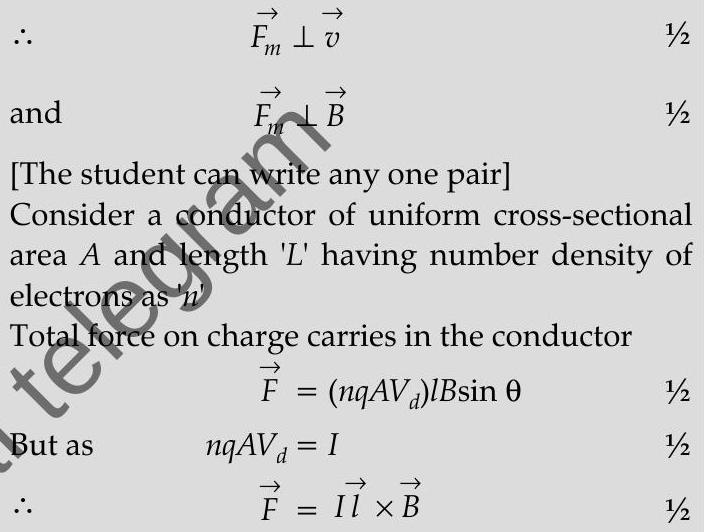moving-charges-and-magnetism Question 29
Question: Q. 1. (i) Write an expression for the force
(ii) Show that kinetic energy of the particle moving in magnetic field remains constant.
U] [Delhi III 2017]
Show Answer
Solution:
Ans. (i) Expression for force acting on charged particle 1
(a) Condition for circular path
(b) Condition for helical path
(ii) Showing Kinetic energy is constant
(i)
(a) When velocity of charge particle and magnetic field are perpendicular to each othe
(b) When velocity is neither parallel norperpendicular to the magnetic field.
(ii) The force, experienced by the charged particle, is perpendicular to the instantaneous velocity
[CBSE Marking Scheme 2017]
[II Q. 2. State the Lorentz’s force and express it in vector form. Which pair of vectors are always perpendicular to each other? Derive the expression for the force acting on a current carrying conductor of length
U [Delhi Comptt. I 2017]
Ans. Lorentz force
Expression in vector form

[CBSE Marking Scheme, 2017]






